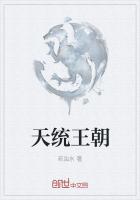Thus from 512 BC, Sun Tzu embarked upon the period of his life where he would prove himself as a great military commander. He advised a cautious approach to confrontation with the Chu. King He Lü, as all great rulers must be able to do, heeded the advice of his sage counselor and delayed his intended plan of launching an immediate attack. This phony “War of Cautiousness” lasted a full six years, during which time the State of Wu prepared itself for the coming conflict and also, vitally, rallied to its banner the support of a number of allies, including the States of Tang and Cai. When the armies of Wu eventually set off for battle, it would be as part of a great “multinational” force.
In 1991, almost two and a half millennia after Sun’s first northern expedition, another multinational army, before embarking on war in the deserts of Iraq, devoted an enormous amount of time, resources and finances to ensure that when the battle commenced their troops would be absolutely ready and primed for combat. In the ultimate triumph of Operation Desert Storm, which lasted 38 days and cost some US60 billion, and which saw the Iraqi frontline military forces utterly annihilated, the meticulousness of the pre-war preparations was one of the key contributory factors. The Americans had absorbed well the lessons taught to them by a master of war over 2,000 years dead.
It is amazing to think that a military manual written thousands of years ago at a time when swords and spears and not depleted uranium or Scud missiles were the weapons of war, could retain such relevance for modern military planners. The Art of War was written towards the end of the Spring and Autumn Period (770 BC-476 BC), a time of enormous social, intellectual and spiritual ferment in the Chinese lands. The spirit that inspired the wise thought of Lao Tzu, that moved the benevolent heart of Confucius also possessed Sun Tzu and enabled him to set down the basic principles of warfare, which have endured right down to our own day despite the enormous changes that have occurred in the interim.
Near the start of The Art of Warthe central importance of war to the welfare of the State is attested. It is, the author observes, a matter of life and death, a road either to glory and survival or else to defeat and ruin. Thus a state that neglects its attention to warfare risks its entire existence. Nevertheless Sun Tzu’s first actions as a military commander were to avoid conflict—to bide his time and ensure that all possible preparations were made. Chinese traditional culture has always stressed the hazards and risks of war and how it should be embarked upon only with very great caution. Although there is no mention of the idea of a “War of Cautiousness” in Sun Tzu’s magnum opus, the text is replete with exhortations about the absolute necessity for painstaking preparation. It was to prove a wise tactic.
Sun Tzu always maintained that the greatest victory was one that could be achieved without fighting. Combat for its own sake was not something that he regarded as glorious; war was rather a mere means to an end. He would look aghast at a battlefield drenched with blood where the survivors outnumbered the slain. The killing fields of World War I and much of the 20th century would not have impressed him as proper examples of the way war should be carried out.













